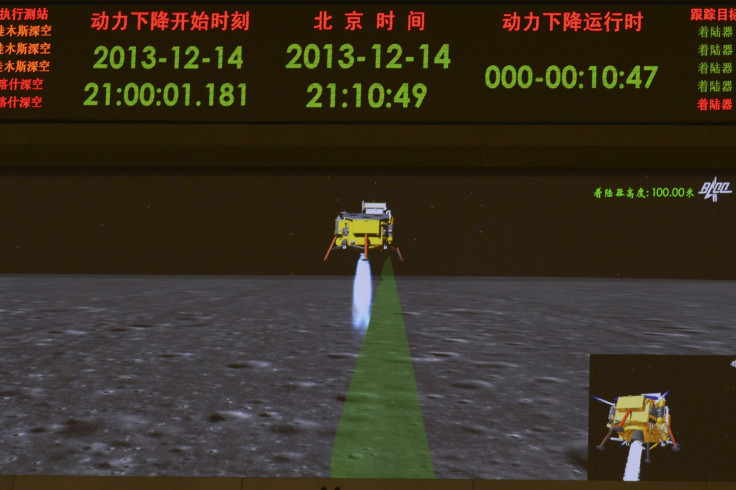China Lands Chang'e 3 Lunar Probe On The Moon, What's Next For The Space Agency?
China has gone to the moon, state news agency Xinhua reported Saturday. With the successful soft landing of its lunar probe, Chang'e 3, and China joins the United States and the former Soviet Union as the only countries to have accomplished such a feat.

China's lunar probe is equipped with a rover, Yutu, or Jade Rabbit, and the landing marks a milestone for the country and its space agency. The lunar probe was launched on Dec. 2, and was set to be the country's first spacecraft to attempt a soft landing on a celestial object. Chang'e 3 began its soft landing preparations at 9 p.m., local time, on Saturday.
After 11 minutes, the lunar probe completed its landing in Sinus Iridum, the Bay of Rainbows. The area was chosen for its relatively flat and safe environment for Chang'e 3. The event marks the first moon landing since 1976, when the Soviet Union landed the Luna 24 mission in Mare Crisium, Sea of Crisis. The Soviets brought back about six ounces of lunar soil to Earth.
According to Xinhua, Yutu will spend three months surveying and exploring the moon while the lander will spend a year on Earth's natural satellite. The lander is equipped with a near-ultraviolet telescope that will be used to observe Earth, the Milky Way, as well as the development of stars, from birth to death, reports the Chinese Academy of Sciences. Yutu is equipped with several cameras to photograph its surroundings, ground-penetrating radar and a robotic arm that scoops up soil samples to be analyzed using an onboard spectrometer.

The Yutu rover will be able to scale slopes, up to 30 degrees, and can travel at a rate of 200 meters, or 660 feet, per hour, reports Agence France-Presse. In June, China launched the Shenzhou 10 spacecraft, carrying three astronauts, and to date the country has sent 10 astronauts, or taikonauts, and several probes to space. According to Associated Press, China sent its first astronaut to space in 2003 and launched its first lunar probe in 2006, evidence of China's ambitious space program.
Chang'e 3 is the third phase of China's lunar exploration program. A similar lander and rover mission, Chang'e 4, is expected to launch in the near future and the lunar exploration is set to culminate with a robotic mission that will return samples to Earth as early as 2017 or 2018, reports CAS. All of these missions, which include invaluable experience and technological upgrades, will culminate with a manned mission to the moon and a space station. While no timetable has been established for these missions, China hopes to accomplish these tasks by the 2020s.
Chang'e 3 joins NASA's Lunar Atmosphere and Dust Environment Explorer, LADEE, and the Lunar Reconnaissance Orbiter on the moon. While the missions have different objectives, Chang'e 3's landing could pose some problems for LADEE. The landing will kick up a lot of dust and exhaust which could affect scientific readings, but may still become a boon for researchers.
As reported on the Planetary Society's blog, NASA is turning a potential problem into a chance for scientific discovery. Chang'e 3's landing will eject water at a known time and LADEE can monitor how the liquid travels from the moon's surface to the atmosphere.
© Copyright IBTimes 2024. All rights reserved.












